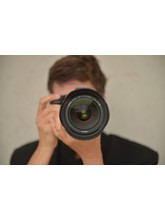Ghostmarkets est né d’un travail de terrain débuté en détention en septembre 2019 : prenant pour point de départ l’interdiction de toute transaction dans l’espace carcéral, dix hommes détenus s'engagent dans la création d'un réseau de production monétaire à l'intérieur des murs. Les débats menés à cette occasion témoignent de l'existence préalable d'un système économique clandestin dont le troc et les monnaies alternatives, telles que les cigarettes, ne constituent que des fragments : une infrastructure invisible basée sur l’échange de services, les dettes d'honneur et la performance de la masculinité détermine la structure de la hiérarchie carcérale. Alors qu'il dirige et capte ces échanges, Jules Ramage mesure progressivement les enjeux liés aux images produites : le protocole de vérification des cartes SD transforme son camescope en outil de surveillance ; en outre, l'obligation légale d'une validation des captations par l'administration pénitentiaire le convertit en instrument de communication institutionnel. Dons et contre-dons témoignent au fil des semaines des profonds échanges symboliques qui se tissent avec son groupe de travail et des enjeux de pouvoir qui se déploient dans les interstices du projet. Afin de retranscrire la complexité de cette expérience, et pour rendre hommage à ses collaborateurs détenus, il choisit d'organiser ses archives audios, vidéos et textuelles en un double dispositif : un film installé et un objet imprimé.
SUR LE TERRAIN
Ghostmarkets s’inscrit dans une collaboration sur le long terme avec un groupe d’hommes détenus au sein de la maison centrale de Poissy. Constitué en 2015 sous la direction de Jules Ramage, ce collectif de recherche-création collaborative comprend : John Dow, Ben, Christophe, Brahli, Sparafucile, Youssef Rhnima, Philippe T., Ilich.
Avec la participation de : Alice Mulliez ; Olivier Royer-Perez (INRAP) ; Laurence Mongin (Monnaie de Paris) ; Nadeera Rajapakse et Sonia Manseri (PHARE) ; David Rabouin (CERILAC) ; et le travail de recherche de Melchior Simioni et Caroline Protais.
FILM INSTALLE
Image : Christophe Ramage
Montage : Gabriel Gonzalez
Etalonnage : Baptiste Evrard
Conception sonore : Didier Sallustro
Mixage : Sébastien Cabour
Construction : merci à Brice Nougues et Julie Machin
OBJET IMPRIME
Conception : Jules Ramage et Gaëlle Renaudin
Design graphique : Gaëlle Renaudin
Production : Guylaine Huet (Le Fresnoy – Studio national des arts contemporains)
Mentor Fresnoy : Edith Dekyndt

Jules Ramage (1987, France) est artiste visuel. Docteur en Sémiologie du Texte et de l'Image, il est aussi chercheur associé au laboratoire CERILAC d'Université Paris-Cité, et membre de la Cité du Genre, institut interdisciplinaire de recherche en études de genre. Il explore les relations de pouvoir mises en jeu dans les structures disciplinaires et institutionnelles. Conscient des limites éthiques et juridiques propres à son terrain et au statut de ses collaborateur-ices, il travaille dans la logique de l'expanded cinema, en produisant des films mais aussi, lorsque cela est impossible, en activant son contenu d'une autre manière, par l'installation, la photographie, l'édition ou la performance.
Depuis 2013, il poursuit un travail de terrain approfondi dans l'espace carcéral, où il implante des protocoles collaboratifs intégrant personnes détenues et surveillant-es. Son travail a été présenté en France, aux États-Unis, en Argentine, en Angleterre, en Espagne et en Allemagne.
Avec John Dow, Ben, Christophe, Brahli, Sparafucile, Youssef Rhnima, Philippe T., Ilich
Ce projet a été développé dans le cadre d'une résidence à la Cité Internationale des Arts de Paris, de septembre 2019 à avril 2021.












